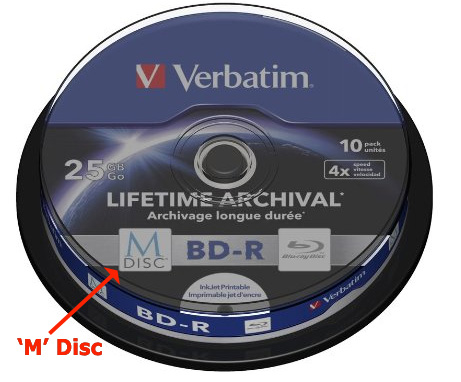|
The Problem
Anyone who wishes to archive material, be it images, documents, or videos, is faced with an almost unsolvable problem when one considers our over-reliance on new technology. Computer drives are predicted to have a life span of five years, flash cards even shorter. Magnetic creep, doping chemical migration in semi-conductors, failing physical parts, and other issues deny longtime archival on information in any real and reliable sense.
Microscopists, like photographers, and film makers are interested in preserving recorded imagery. I'm also a film maker and with several feature films completed, I am concerned at how I keep the masters for long term safety without losing the material. Films take up a lot of file space and keeping an edited master requires a minimum of 25 Gigabytes of data space. This equates to a Blue-Ray disc, single sided. The best methods used by data centres involve exploiting Raid technology where data is written across two or more drives so any failure of a single drive means it can be replaced (the drive) and the data copied back from the remaining working drive. For the home user, the process is to copy off whole drives to new ones every few years.
People believe DVDs and Blue Ray discs will retain their data for long periods of time. What most don't know is that these discs are fragile and data on them is easily corrupted and destroyed, with many poorly made ones breaking down due to unstable chemistry after a few years. It's highly likely that even National Archival institutes like The British Library are tearing their hair out trying to establish durable methods for storing their documents, books, and references.
I recently watched a documentary where the chap charged with recording where all the French Nuclear Power Stations radioactive waste is stored, has resorted, to paper, discs, and a new method he developed to store information on genetic code. A worry problem if future generations lose sight of huge dumps of radioactive material buried deep beneath their feet!
A Solution?
There is no 100% solution. Whatever medium (media) you decide to store data on, apart from paper, rock, and stone, you're going to need at some point in the distant future, a means to read the data off again. A blueray disk, even if it can be made to last 1000 years, relies on the fact that a BlueRay reader device will still be available 1000 years from now to extract the data and present it into a human readable form again. Or, the way we're going, into a form readable by machines, androids, and Cyborg... in case we humans become redundant :)
A best method for now is to store data on a ready available material or media which has been improved in its design to truly resist corrosion and breakdown. Enter the M Disc (M-Disk, USA).
The M Disc
Extracted from wikipedia...
M-DISC's design is intended to provide greater archival media longevity. Millenniata claims that properly stored M-DISC DVD recordings will last 1000 years. While the exact properties of M-DISC are a trade secret, the patents protecting the M-DISC technology assert that the data layer is a "glassy carbon" and that the material is substantially inert to oxidation and has a melting point between 200° and 1000 °C.
The media were stress tested according to a procedure designed by Millenniata at a facility of the United States Department of Defense. The testing found that M-Disc DVDs are more durable than conventional DVDs. "The discs were subject to the following test conditions in the environmental chamber: 85°C, 85% relative humidity (conditions specified in ECMA-379) and full spectrum light". However according to the French National Laboratory of Metrology and Testing at 90°C and 85% humidity the DVD+R with inorganic recording layer such as M-DISC show no longer lifetimes than conventional DVD±R.
Conventional DVD-R and BD-R LTH (Low To High) use recording layers of organic dye and separate reflective layers. Standard (HTL) BD-R and BD-R/DL (except LTH BD-R) typically use inorganic data layers, but continue using a reflective layer. M-DISC BD-R has no reflective layer. M-DISC uses a single inorganic recording layer, which is substantially inert to oxygen, but requires a higher-powered laser. M-DISC DVD does not require the reflective layer. Thus, both the M-DISC and inorganic BD-R physically alter the recording layer, burning a permanent hole in the material. Besides physical damage, failure of the reflective layer, followed closely by degradation of the data layer, are the primary failure modes of all optically recordable disks.
Recorded discs are readable in conventional drives. Available recording capacities are similar to other optical media from 4.7GB DVD-R to 25GB, 50GB BD-R and 100GB BD-XL. In first DVD and Blu-ray M-Discs there was difficulty distinguishing the writable side of the disc, so they added color to distinguish the sides and make it look like the coloring on standard DVD or Blu-ray media.
LG Electronics, ASUS and Lite-On produce drives that can record M-DISC media. Ritek produces M-DISC Blu-ray disc media, sold under the Imation, Ritek and M-DISC brands. Verbatim produces co-branded discs, marketed as the "Verbatim M-Disc".
So, I thought I would buy a new Blueray writer which can also burn M-Discs. All of the modern LG burners can now write M discs, I learn. I bought this one.
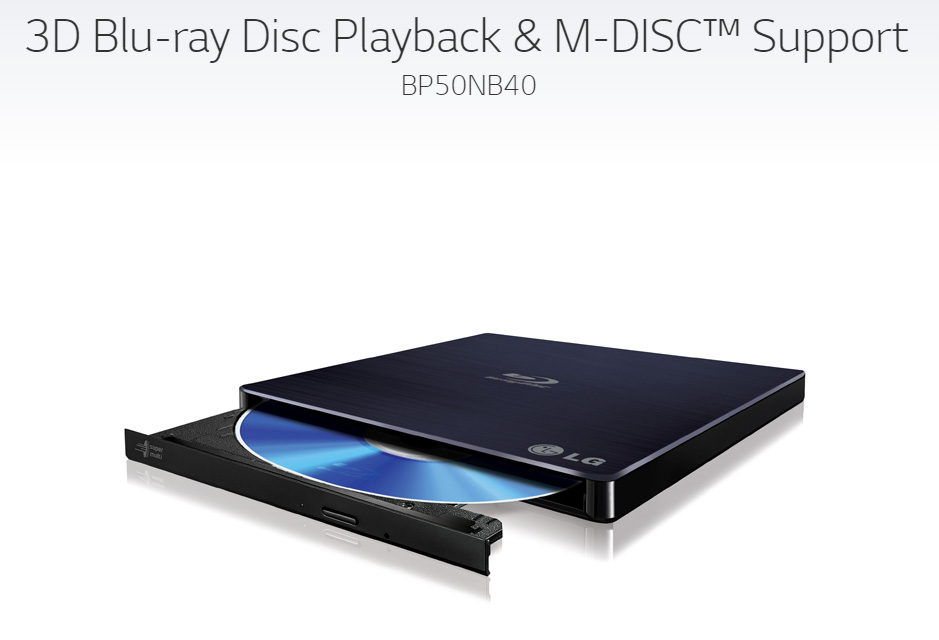
It can be bought for around $90.00. And it proved an excellent purchase. These are the specs.
External - Connects VIA USB 2.0
Silent Play Reduces Noise from Disc Spin During Movie Playback
Supports 3D Blue-ray Disc
Playback supports BDXL (100GB Triple Layer) Disc
Jamless Play Smooths Out Playback of Damaged Blu-ray or DVD Discs. Max.
6X BD-R Read and Write Capability / Max. 8X DVD±R Write Speed
The M-Discs themselves are more expensive than ordinary Blueray blanks. a pack of 3 25 Gig Bluerays cost about £11.00. You can also get M Disc DVDs as well.
Testing the claims
I wanted to test the claims and decided to copy my latest feature film 'The Lorelei' onto an ordinary Blueray and an M-Disc Blueray, then subject them both to an all weather external environment. I put both discs outside in Feb. 2016 (this year) and bought them back in today Sep. 2016. They have seen temperatures below freezing, above 80 degrees F, and have been subjected to hail stones, plant scratches, being partially buried in soil, and all types of disturbances without any protection at all. Here's a picture of them taken this summer. The one with the white label is the M-Disc.
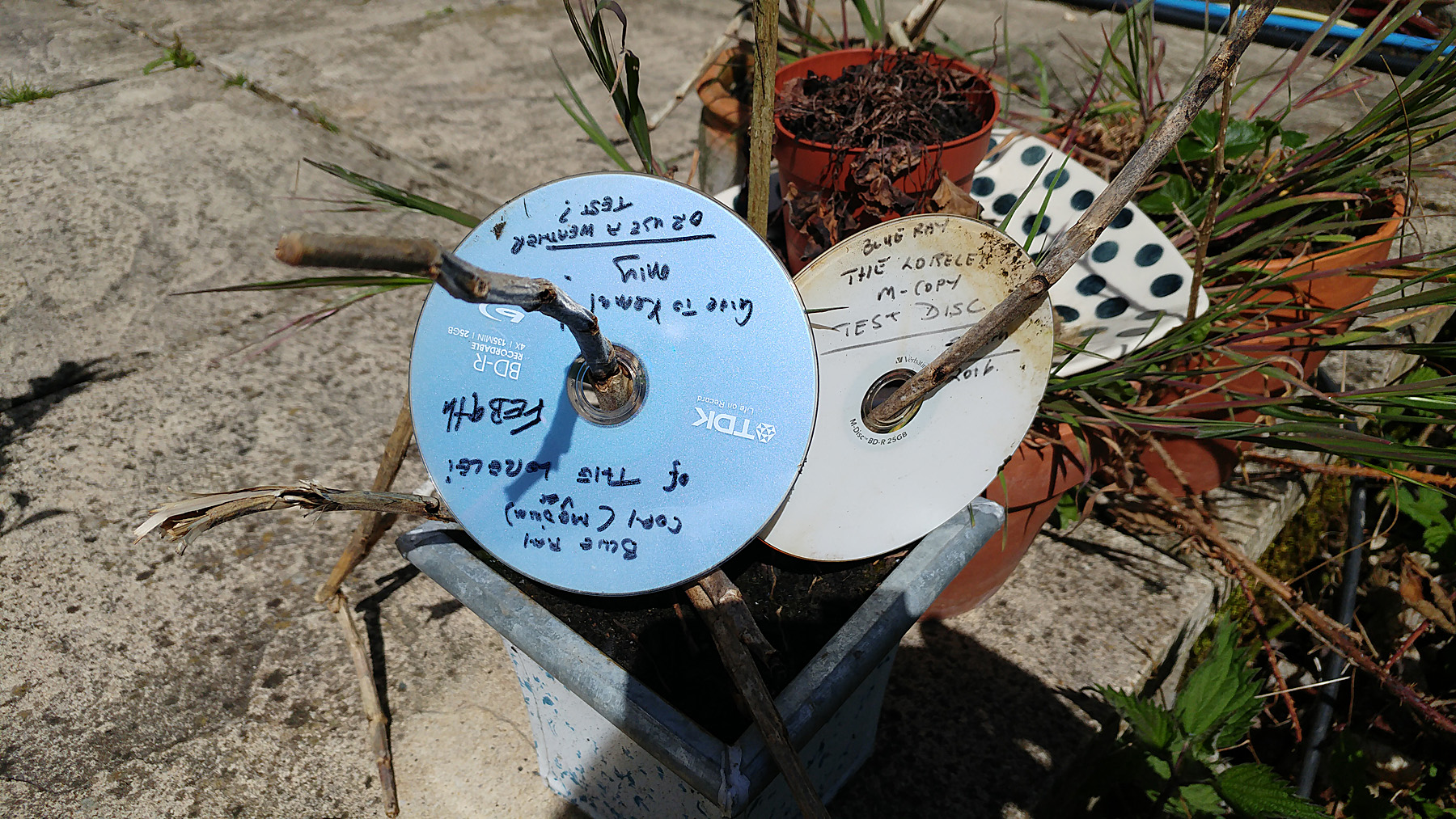
This is only one of the positions I placed them in and I alternated their faces so sometimes the data side was facing out sunwards and sometimes not. I half buried them for 2 months in soil as well for good measure. Here's how they looked today when I retrieved them. The one on the left is the ordinary Blueray. It is completely destroyed. The sunlight has generated temperatures greater than the silver data layer to withstand, causing it to crack, expand and break off the substrate. The one on the right is the M-Disc. Apart from a soiled surface, it otherwise looks intact.
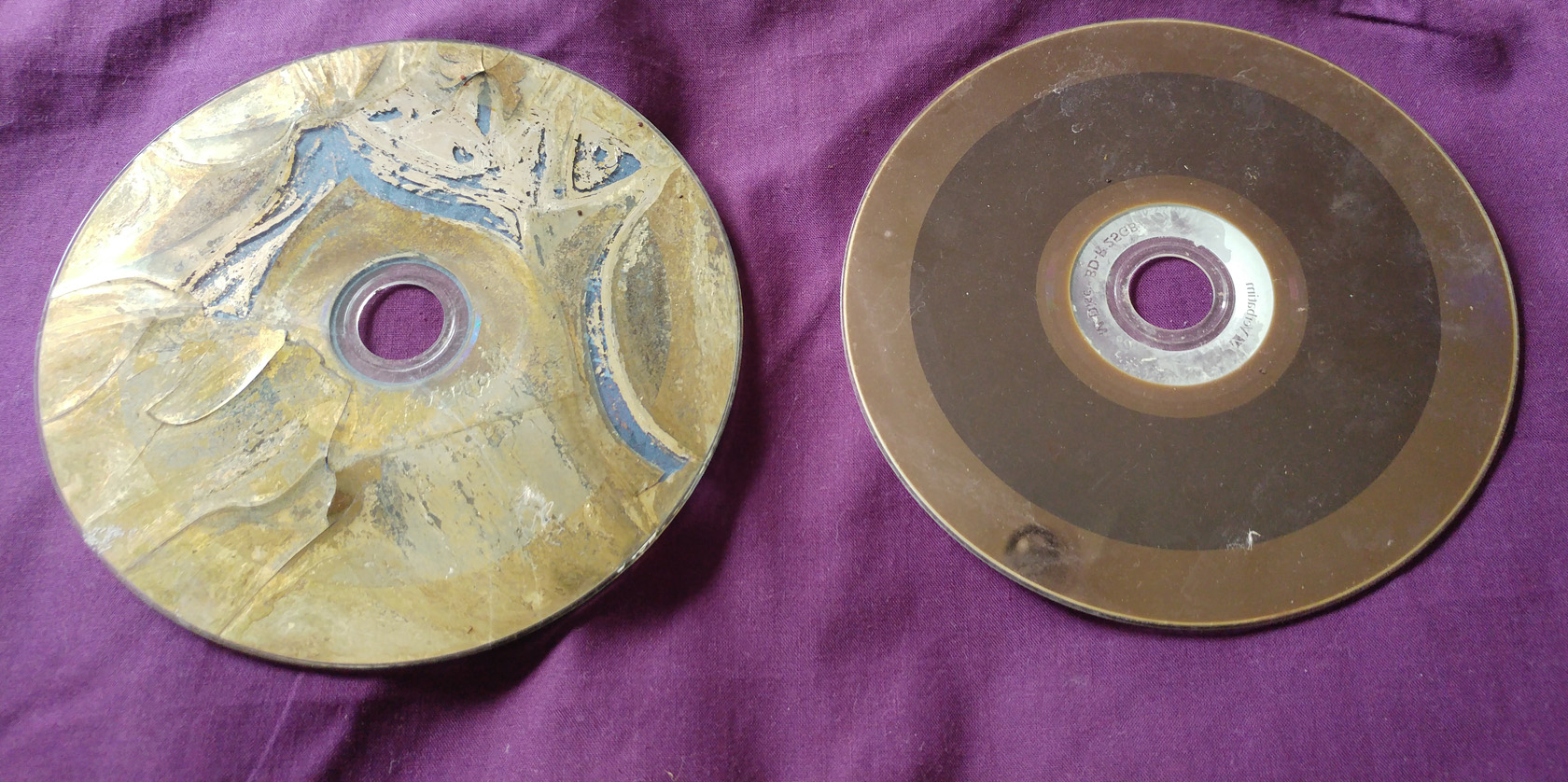
A quick wash with washing up liquid and warm water...
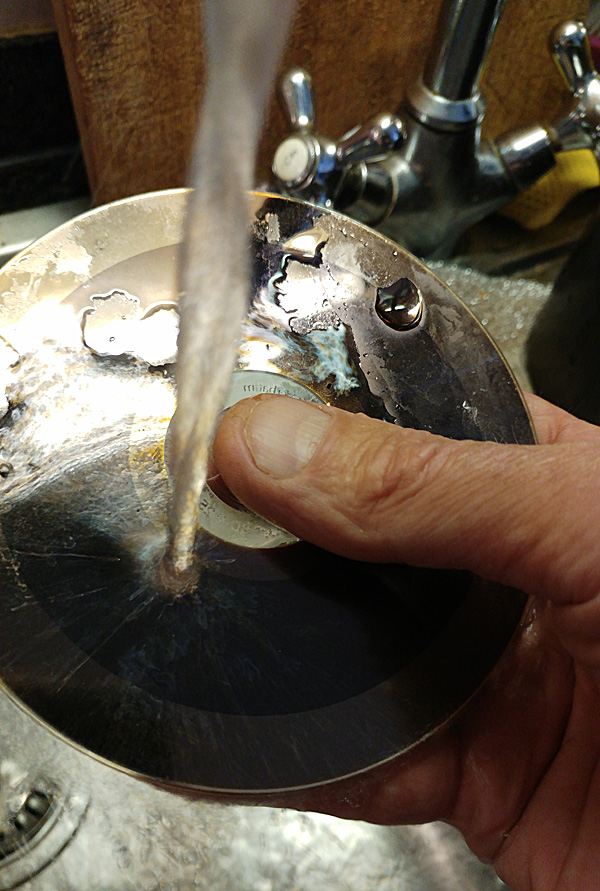
...gave me a surface like this.
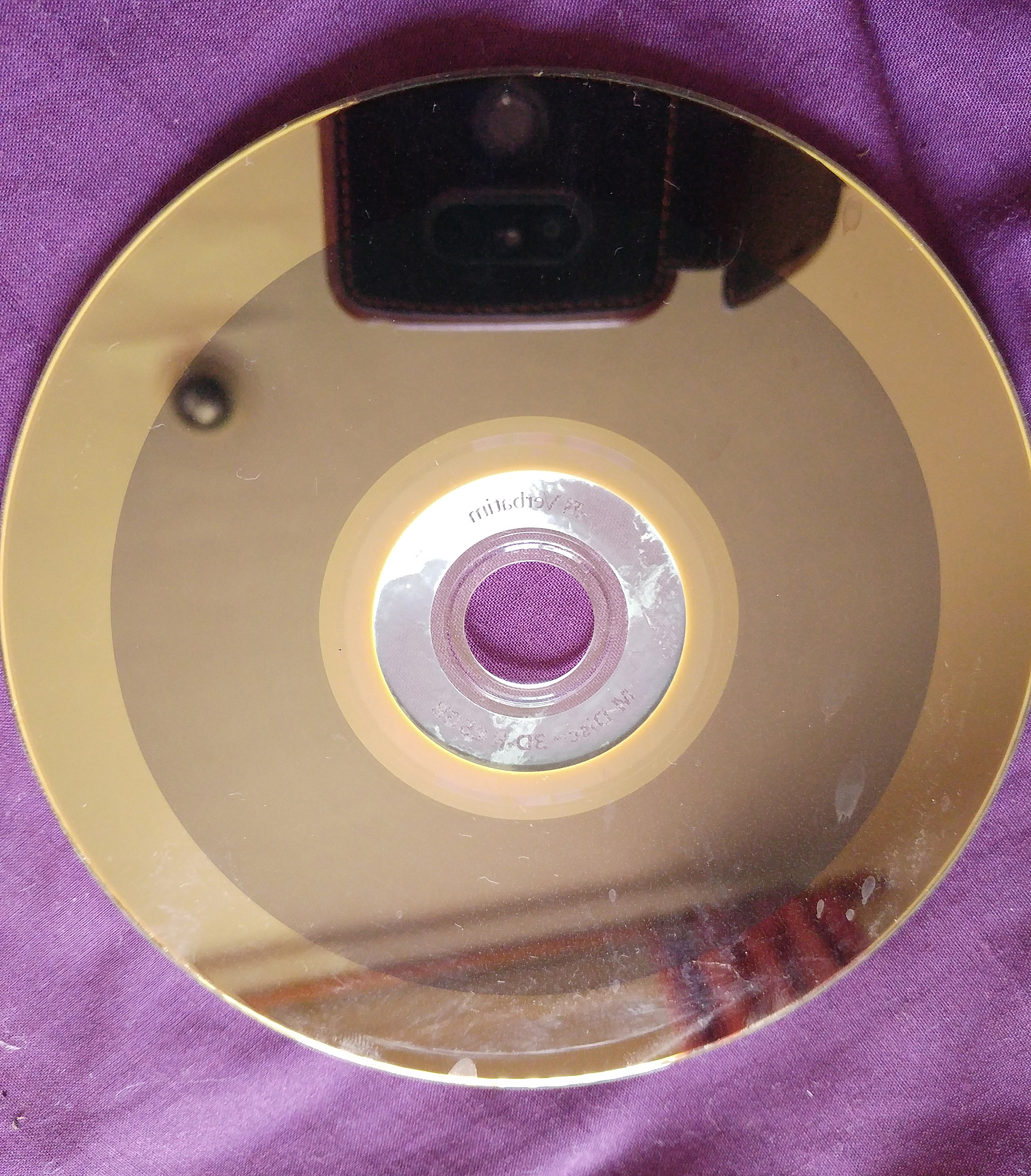
There were still stains on the disc (lower right) so I cleaned the disc again with kitchen towel and white spirit. This did the trick. So, here's my precious movie on the M-Disc. Now, the big test: will it play?
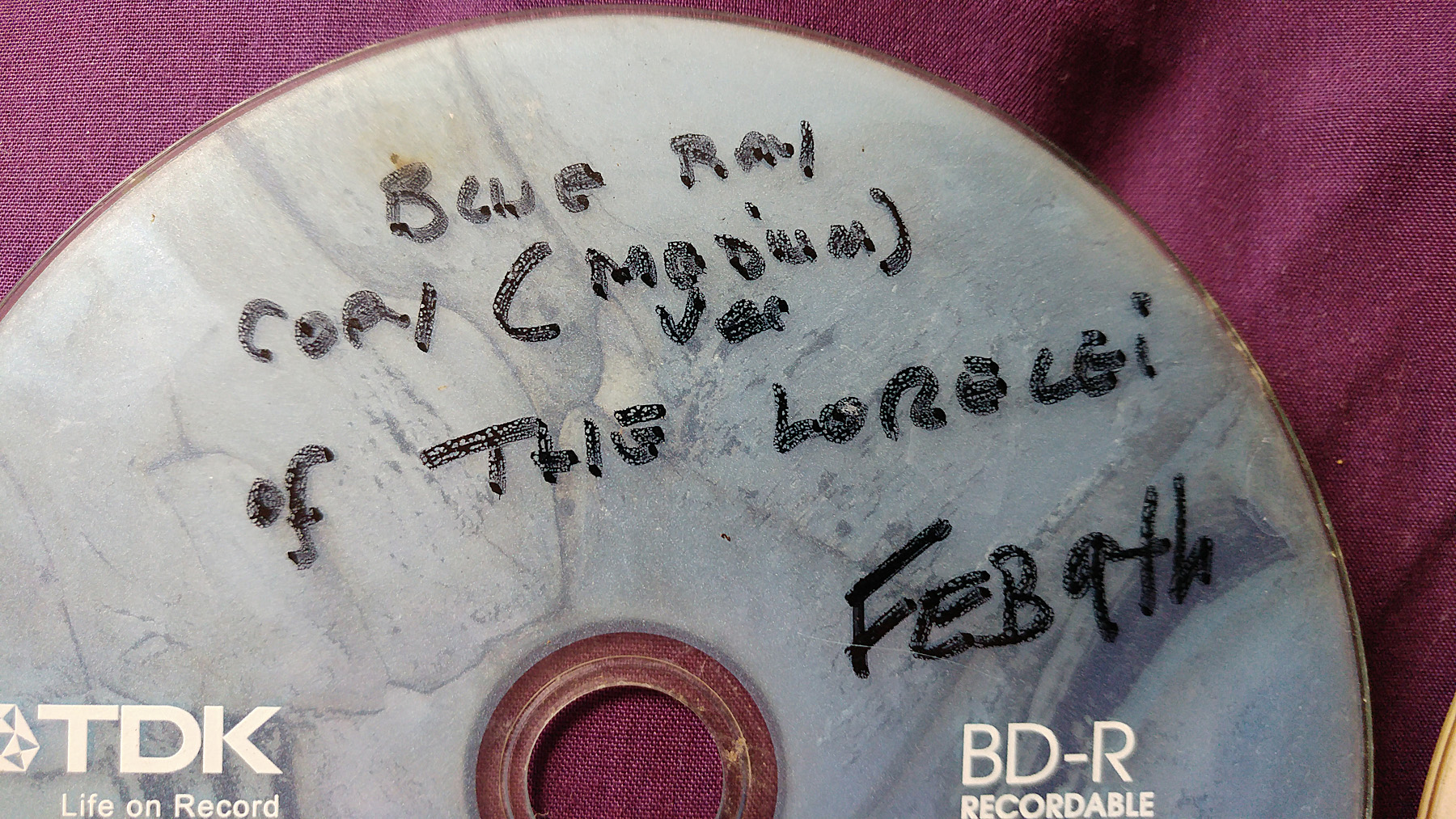
|
